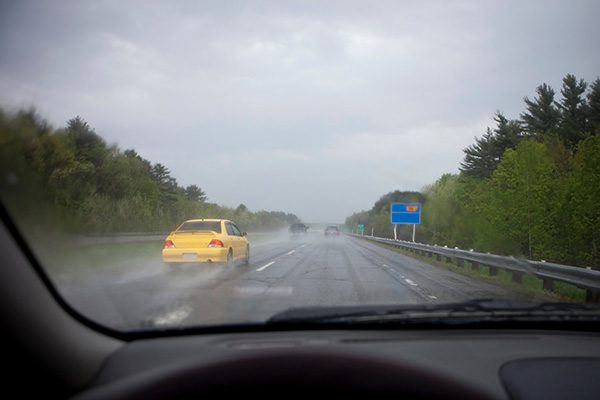
Rain doesn’t need to be heavy to change the way your vehicle handles. Even a light drizzle can turn a routine drive into a risky one—especially when speed is involved. Speeding in wet conditions drastically reduces your control and increases your chances of a crash, even if you feel like you're driving "just a little faster" than normal.
The truth is, the road itself changes when it’s wet. Traction decreases, visibility drops and reaction times become more critical. It’s not just about driving slower—it’s about understanding how rain affects your car and why maintaining speed is more dangerous than it might seem.
Wet Roads Reduce Traction
Your tires grip the road using a tread designed to push water aside. But when there's too much water—or you're moving too fast—those grooves can’t clear the surface quickly enough. This leads to a condition called hydroplaning, where your tires glide on top of a thin layer of water instead of making direct contact with the road.
Once that happens, your steering becomes less responsive, braking takes longer, and any sudden movements can cause your vehicle to slide. Even with modern traction control and ABS systems, there’s only so much technology can do if your tires aren’t touching the pavement.
Driving too fast during rain means you’re increasing your chances of hydroplaning, even with good tires. At 35 mph, your car might still grip the road. At 55 mph on the same surface, the wheels could completely lose contact.
Stopping Distances Get Much Longer
Rain adds a deceptive element to braking. You might press the brake pedal and expect the same response you're used to on dry pavement, but in wet weather, your stopping distance increases dramatically—especially at higher speeds.
For example, a car that stops in 60 feet on dry pavement might take 120 feet or more when the road is wet. That difference can be the space between a safe stop and a rear-end collision.
Braking hard on wet roads can also cause your tires to lock up (if your ABS fails or you don't have it), and even with ABS, the system can only work with the traction it’s given. The faster you're going, the more force the brakes have to fight—and the longer it takes to come to a full stop.
Rain Reduces Visibility for Everyone on the Road
Speeding becomes especially risky when you factor in the impact of rain on visibility. Heavy rainfall, windshield fogging, and water spray from other vehicles all combine to limit how far ahead you can see—and how well others can see you.
When you're speeding, you have less time to react to obstacles, merging vehicles, or brake lights ahead. If another driver hydroplanes, stalls, or changes lanes suddenly, your ability to respond in time depends on both visibility and speed. Rain shortens your visual range—and the faster you're going, the more you're relying on that already-limited space.
Tires and Wipers Can Only Do So Much
Many drivers assume that having good tires or new wiper blades is enough to stay safe in the rain. While those things help, they don’t eliminate the risk of speeding in wet weather. Even high-performance tires can hydroplane at higher speeds, and great visibility doesn’t change the fact that traction is still compromised.
If your tires are underinflated or worn, your risk of sliding goes up even more. But even with perfectly maintained tires, rain changes the rules of the road, and speeding ignores those changes completely.
Local Conditions
In cities like Bexley, OH, where rainstorms can pop up quickly, it’s easy to be caught off guard. Roads that haven’t been cleaned recently often have a buildup of oil, dirt, and other residue that gets especially slick when mixed with fresh rain. This “first rain” effect makes the pavement more slippery than usual, especially during the first 15 minutes of rainfall.
Add in poorly drained streets, puddles, or intersections where water pools, and driving fast becomes even more dangerous—even if you’ve driven that route a hundred times before.
Your safety on wet roads starts with more than just cautious driving—it also depends on the condition of your brakes, tires, suspension, and wipers. At Bexley Automotive in Bexley, OH, we can help you prepare your car for rainy days with inspections and services that improve handling and visibility.